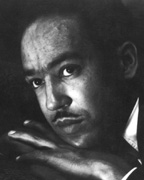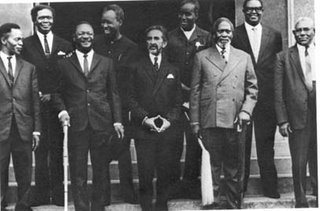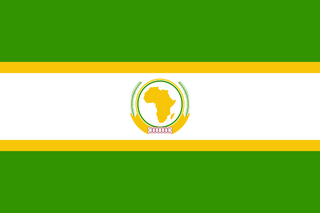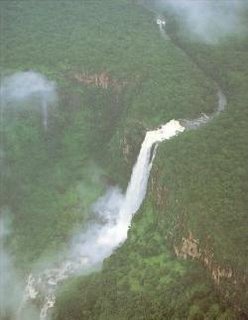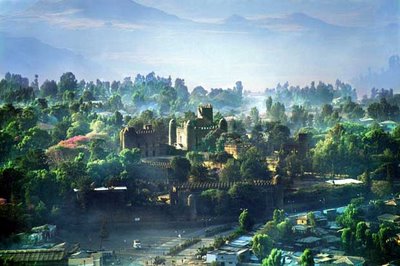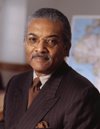The Ethiopian Millennium: Time to Annex the Ethiopian Renaissance
“Awake! Awake! Put on your strength! Put on your new beautiful garments.
Shake yourself from the dust: arise.
Loose your bone from your neck....”
Dr. Ephraim Isaac echoed the above Prophet Isaiah’s 3,000 years old message to the Ethiostudy members and guests at a gathering, which took place on August 14, 2004 in Washington, DC at the Sankofa Bookstore.
During his speech, Dr. Isaac stressed the importance of mobilizing the African Diaspora to celebrate the Ethiopian millennium as a way to revive the Ethiopian
Renaissance, which is a network of people devoted to sublimate the consciousness and living standards of Ethiopians.
Purchasing Ethiopian products, such us the traditional clothing and jewelry, is important in asserting economic independence.
Sankofa, which means there are benefits in learning from ancestors, in Akan - a Ghanaian language, fits Dr. Isaac’s message that encourages Ethiopians to study their history to find solutions to the current problems Ethiopia faces.
Dr. Isaac is a peacemaker, visionary and teacher.
He is the first professor of Afro-American Studies department at
Harvard University.
He directed the
Institute of Semitic studies in
Princeton.
He received a Peacemaker Award from the
Tanenbaum Center in 2002 for his effort to resolve the boarder conflict between
Ethiopia and
Eritrea.
In July 2004, Dr. Isacc also received an honorary Doctor degree from
Addis Ababa University.
Currently, he is attempting to create peace amongst Ethiopian leaders and the political candidates.
Tigest Belachew, an active member of Ethiostudy and one of the committee members of the Ethiopia Renaissance, organized and introduced Dr. Isaac’s speaking event.
The Ethiopian Renaissance recently revived the Committee for Ethiopian Literacy organization of the 1960’s.
Ethiostudy is a free association of Ethiopians and friends of
Ethiopia.
The association’s goal is to understand Ethiopian history, politics, culture and economy by inviting different professionals to share their knowledge.
Dr. Ephraim Isaac began his speech by asking what language the audiences prefer him to use for his presentation. He speaks seventeen languages. The audiences chose English.
Dr. Isaac said it is crucial that more people pay attention to the study of the Ethiopian ancient languages, history and literature because we could learn how we could work together for the betterment of
Ethiopia.
“
Ethiopia is like a combination of
Kenya and
Egypt,” where people could study history while they enjoy nature.
Dr. Isaac identified many research areas in
Ethiopia that are helpful for the current generation.
Specifically, he pointed out that there are many Ge’ez books about history, literature, music, religion, chronicles and hagiographies.
<>
Millions of useful manuscripts can be found in churches and monasteries in Debre Bizen, Geshen Mariam, Debre Mariam, and many other places.
Out side of the country, Ethiopian historic manuscripts could be found in the Library of Congress, in Washington D.C., Biblioteque National in France; British Library in London; Vatican in Rome; and Ethnographic library in Russia.
<>
Dr. Isaac identified four areas of researches that are important to the current generation.
First, Dr. Isaac emphasized that the ancient manuscripts provide examples of multiculturalism, which could remedy ills caused by ethnic division or economic segregation.
<>
Many European visitors witnessed peaceful way of life in
Ethiopia in the 15th century.
For example,
the humanist Damia da Goes, a disciple of Erasmus, reported Christians, Muslims, and Jews, and others lived peacefully in
Ethiopia.
The Pope prohibited Damia da Goes’s book.
Second, Ethiopia’s hidden manuscripts are important in the study of religion and philosophy. Beyond being a place where Judaism, Islam and Christianity coexisted harmoniously for centuries, these religions have a deep root in Ethiopia.
According to Dr. Isaac, Prophet Mohamed’s teachings and the Holy Quran reflect Ethiopian linguistic, literary, and conceptual influences.
Three of the four early Muslim leaders are believed to be of Ethiopian or part Ethiopian origin, such as the Muezzen Bilal, the Khalif Omar, and the military leader Amru Ibn al.
Additionally, he pointed out because Ge’ez is one of the seven languages the bible was first translated into, a person who understand Ge’ez is a respected biblical scholar. <>
Third, Dr. Isaac shared there are plenty Ethiopian manuscripts that contain many role models that could enhance everybody’s life.
For example, he discussed how several Ge’ez books record many influential women’s stories.
Dr. Isaac talked about some heroines, such as Meskel Kebra, Kerstos Semera, Zena Mariam, and Emmea Worete.
Kerstos Semera, was a philosopher who always advocated peace, Dr. Isaac explained.
In one of her priers, Dr. Isaac quoted her for saying “God why don’t you reconcile with Satan so we can also be friends with our enemies.”
Perhaps now we should ask why don’t we become friends with our enemies so there would be a universal peace?
Fourth, the history of Ethiopians’ the Ethiopian Diaspora is also important for Ethiopians who live outside of the country.
Dr. Isaac recognizing the current Diaspora’s effort. He explained Ethiopians are currently having a positive influence to the point where their language has become one of the official languages in the world’s most powerful city, Washington, DC.
Historically, Ethiopians also had migrated to other regions of the world as merchants, sailors, and soldiers to influence their host country positively, he pointed out. For example, Dr. Joseph Harris, a professor at Howard University, who wrote “Africans in India,” and others documented that in India there was an Ethiopian Kingdom in the 13th century. Dr. Isaac shared that the British faced the strongest resistance during their invasion in Janjira, one of the areas populated by Ethiopian descendants.
Dr. Isaac told while Ethiopian history in the past has influenced people positively, in the last 25 to 30 years’ our country has been depicted in a shameful way in the international media. He said now it is the time for Ethiopia to become an inspiration for economic freedom around the world, as Ethiopia was an inspiration to fight against colonialism and slavery.
He demonstrated how Ethiopian could rise from poverty through an old Ethiopian tongue-twister: “afean ba-malasie malasien ba-afea ka-lan-qoalanpalatakskut man yan-qoalapelataselegnal?” This proverb means, if I do not help my own tongue to speak, then who will? Dr. Isaac used this proverb to communicate if “Ethiopian are the once who could solve Ethiopian problems.”
His life is exemplary. He dedicated his life in learning and teaching since a very young age. As he eloquently communicated during his speech and through his work, he demonstrates the importance of revealing Ethiopians hidden treasury in the realms of humanities.
As a visionary, he actively advocates the idea of celebrating the coming Ethiopian millennium, which will commence in three years, in the Gregorian calendar 2006-07. Dr. Isaac advised the current Ethiopian government and various civic organizations to mobilize the country for the Millennium as a dawn and day break for an Ethiopian Renaissance.
Dr. Isaac is optimistic about Ethiopia’s near future. He shared his observation of many positive involvements of students in Eritrea and Ethiopia who yearn for peace. He talked about his personal experience with several law school students in Asmara University who denounce the separation.
On the Ethiopian side many new student organizations such as the Afro Flag group in Addis Ababa University, hope that some day the Ethiopian and Eritrean people will respect and work with each other. These groups reject divisions among Ethiopians and prepare themselves to work with anyone whose goal is to develop the country by working together.
He believes the whole Black world would support Ethiopians in African development. He has several African American who have studied Ge’ez literature under him and who admire Ethiopia for its contribution to fighting for freedom.
At a closing of his speech, Dr. Isaac introduced Tigist Belachew, Winta Tafferi, Mike Endale, and Sefanit Mesfin. He said they were “soldiers of the Renaissance.” They are also some of the active leaders the Ethiostudy group, which is a part of Ethiopian Students Association International.
For a long lasting peace in Ethiopia, Dr. Isaac suggested Ethiopian children have to be taught at least four languages: Amharic, Tigregna, Oromefa, and one other Ethiopia language they elect.
On his conclusion, Dr. Isaac emphasized, Ethiopia does not belong only to the leaders. A leader comes, a leader goes but Ethiopia is eternal. We could make the new Millennium work for us by uniting and working with and respecting each other. The solution is to use the coming Ethiopian Millennium as a way to revive the Ethiopian Renaissance: “the new beginning, a new dawn to bring solutions to starvation and diseases and make Ethiopia a strong leader in the world.”


